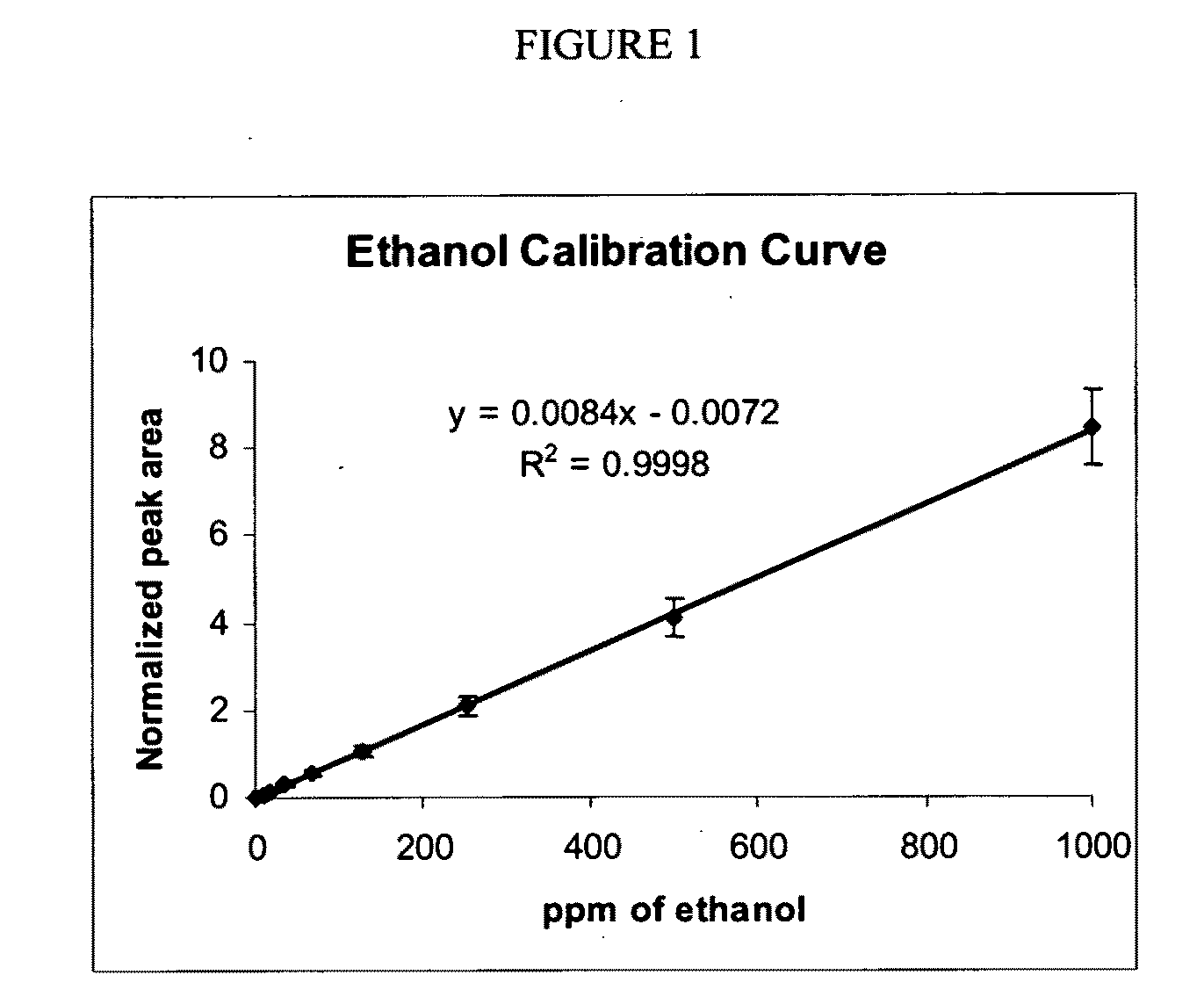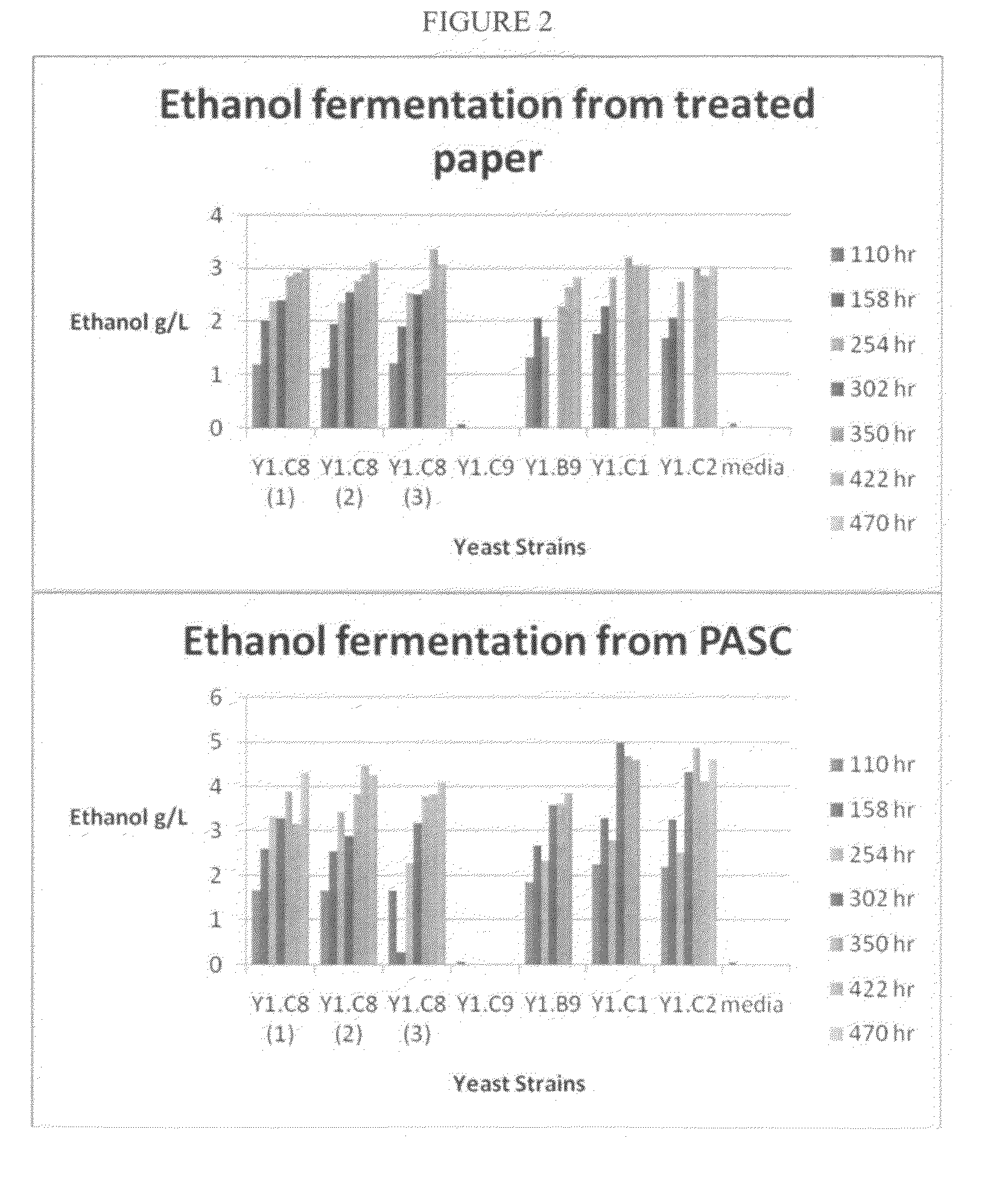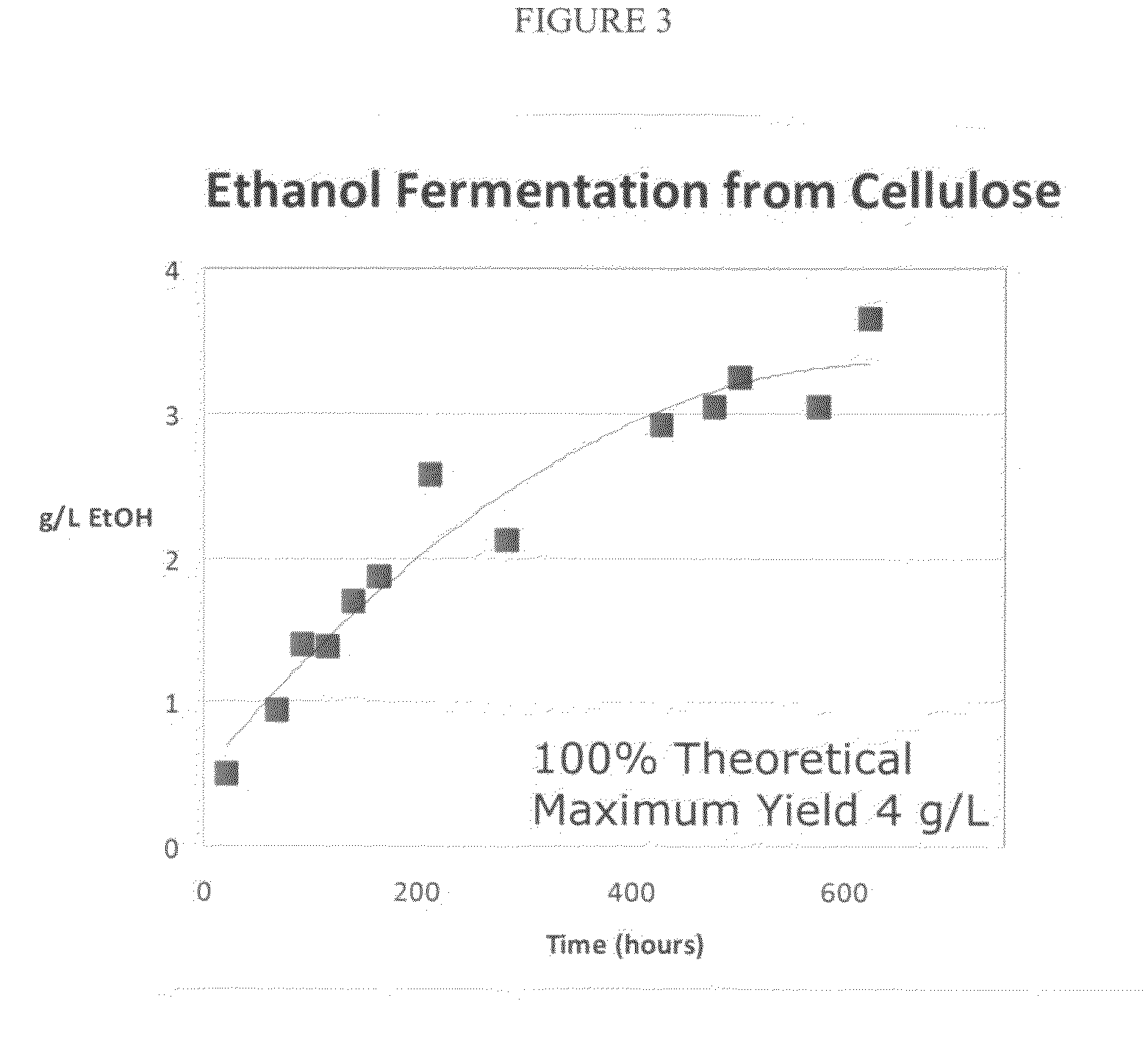Methods for the production of ethanol
a technology of ethanol and recombinant microorganisms, which is applied in the direction of microorganisms, biofuels, fungi, etc., can solve the problems of high cost of source materials, use of food crops, and difficult production of biofuels from cellulose and lignocellulose with current technologies
- Summary
- Abstract
- Description
- Claims
- Application Information
AI Technical Summary
Benefits of technology
Problems solved by technology
Method used
Image
Examples
example 1
Construction of Expression Plasmids Encoding Cellulase Genes
[0058]Expression constructs encoding cellulases for codisplay on the yeast cell wall surface were constructed by fusing cellulase genes with the DNA encoding the secretion signal sequence of glucoamylase from Rhizopus oryzae. The secretion signal is responsible for delivery of the cellulase to the cell wall. The gene, encoding the C-terminal half of S. cerevisiae α-agglutinin was linked to the 3′-end of the cellulase. The α-agglutinin part of the recombinant protein allows for the attachment to the cell wall. Furthermore, all three cellulases were also expressed in secreted soluble forms that are not attached to the cell wall. Expression constructs for secreted forms lacked the α-agglutinin portion.
[0059]DNA sequences of cellulase genes are known, and the following genes were used: T. reesei endoglucanase II (GenBank accession number DQ178347); T. reesei cellobiohyrdolase II (GenBank accession number M55080) and A. aculeatu...
example 2
Transformation of S. cerevisiae and Transformant Selection
[0087]Derivatives of yeast strains AFY1 (MATα his3-Δ200 leu2-3, 112ura3-52 lys2-801 trp1-1) and AFY2 (MATa his3-Δ200 leu2-3,112 ura3-52 lys2-801 trp1-1) (Table 1) were used. These strains can be transformed with up to five plasmids carrying different selection markers. Transformation with the expression plasmids were performed with a lithium acetate method. Co-transformation with up to 3 plasmids was performed and the Trp+Ura+Leu+ colonies containing plasmids encoding cellulases were selected.
[0088]The yeast transformation procedure used was a slightly modified version of the protocol described in Ausubel et al., (2002). Cells from an overnight culture were resuspended in 50 mL YPD (start OD600 of 0.2) and grown to an OD600 of 0.5-0.7. The cells were harvested by centrifugation (1,500 g, 5 min) and resuspended in 20 mL sterile distilled water. The cells were harvested by centrifugation and resuspended in 1.5 mL of freshly pre...
example 3
Cellulose treatment
[0089]All chemicals, media components and supplements were of analytical grade standard. Phosphoric acid-swollen cellulose (PASC) was prepared as described by Den Haan et al., (2007). Briefly, Avicel® PH-101 (Fluka) (2 g) was first soaked with 6 mL of distilled water. Then, 50 mL of 86.2% phosphoric acid was added slowly to the tube and mixed well, followed by another 50 mL of phosphoric acid and mixing. The transparent solution was kept at 4° C. overnight to completely solubilize the cellulose, until no lumps remained in the reaction mixture. Next, 200 mL of ice-cold distilled water was added to the tube and mixed, followed by another 200 mL of water and mixing. The mixture was centrifuged at 3,500 rpm for 15 min and the supernatant was removed. Addition of distilled water and subsequent centrifugation were repeated. Finally, 10 mL of 2M sodium carbonate and 450 mL of water were added to the cellulose, followed by 2 or 3 washes with distilled water, until a final...
PUM
 Login to View More
Login to View More Abstract
Description
Claims
Application Information
 Login to View More
Login to View More - R&D
- Intellectual Property
- Life Sciences
- Materials
- Tech Scout
- Unparalleled Data Quality
- Higher Quality Content
- 60% Fewer Hallucinations
Browse by: Latest US Patents, China's latest patents, Technical Efficacy Thesaurus, Application Domain, Technology Topic, Popular Technical Reports.
© 2025 PatSnap. All rights reserved.Legal|Privacy policy|Modern Slavery Act Transparency Statement|Sitemap|About US| Contact US: help@patsnap.com



